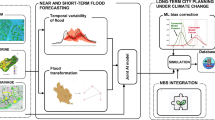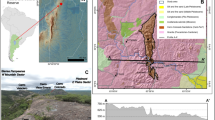Abstract
This paper described the main four basic models of ideal landscape in the Mount Lushan National Park as Kunlunshan model, Xumishan model, Peach flower land model, Christian model. Five typical places in Mount Lushan with the ideal landscape characteristics like the East Grove Temple, White Deer Cave Academy, Simplicity and Tranquility Monastery, Lushan Valley, and Villa-cluster of the East Valley were analyzed, and the integration of the basic models for each place was discussed to make the realistic landscape conform to the ideal needs. Moreover, the discussions also involved the characteristics of ideal landscape that are featured in resource, culture, structure, function, process, scale and region. In conclusion, ideal landscape in the Mount Lushan National Park was the product of the interaction between human and nature. Mount Lushan inherits the essence of Chinese traditional culture with a history of more than 1000 years; and it also absorbs the manna of the Western culture as well as the exchanges between nature and humanities together with the conflict and adaptation among different cultures. The natural landscape could be satisfied with the survival demand and cultural taste of mankind by the way of ecological planning.
Similar content being viewed by others
References
Antrop M. 1997. The concept of traditional landscapes as a base for landscape evaluation and planning. The example of Flanders Region. Landscape and Urban Planning, 38(1–2): 105–117.
Blasco E, González-Olabarria JR, Rodriguéz-Veiga P, Pukkala T, Kolehmainen O, Palahi M. 2009. Predicting scenic beauty of forest stands in Catalonia (North-east Spain). Journal of Forestry Research, 20(1): 73–78.
County Annals Compilation Committee of Xingzi County in Jiangxi Province. 1990. County Annals of Xingzi, Nanchang: Jiangxi People Press.(in Chinese)
Daniel TC. 2001. Whether scenic beauty? Visual landscape quality assessment in the 21st century. Landscape and Urban Planning, 54(1–4): 267–281.
Fu Bojie, Chen Liding, MaKeming et al. 2003. Principle and application of landscape ecology. Beijing: Science Press.(in Chinese)
Harrison B. 2005. Tourism, farm abandonment, and the “typical’ Vermonter, 1880-1930. Journal of Historical Geography, 31(3): 478–495.
He Xiaoxin, Luo Jun. 2000. Feng-shui and the environment of Southeast China. Worldviews: Environment, Culture, Religion, 4(3): 213–234.
Hong Sunkee, Song Inju, Wu Jianguo. 2007. Feng-shui theory in urban landscape planning. Urban Ecosystems, 10(3): 221–237.
Li Caidong. 1989. Brief history of White Deer Cave Academy. Beijing: Education Science Press.(in Chinese)
Liang Lu, Xu Ran, Pan Qiuling. 2005. A cultural and geographical probe into the ideal landscape in mythology and religion. Human Geography, 84(4): 106–109.(in Chinese)
Liu Changbing. 2002. Environmental art of White Deer Cave Academy. South Cultural Relics, 32(2): 52–54.
Liu Xibo. 2004. Where is the prototype of “Tao Yuanming’s Peach Blossom Garden”? Jiujing Normal College Journals (Philosophical, Social Science Edition), 28(3): 13–16.
Lushan Construction Institute. 1996. Landscape construction art of Mount Lushan. Nanchang: Jiangxi Art Press.(in Chinese)
Mörtberg UM, Balfors B, Knol WC. 2007. Landscape ecological assessment: A tool for integrating biodiversity issues in strategic environmental assessment and planning. Journal of Environmental Management, 82(4): 457–470.
Roth M. 2006. Validating the use of Internet survey techniques in visual landscape assessment-An empirical study from Germany. Landscape and Urban Planning, 78(3): 179–192.
Ruiz JP, Gonzalez-Bernaldez F. 1983. Landscape perception by its traditional users: The ideal landscape of Madrid livestock raisers. Landscape and urban Planning, 9(3–4): 279–297.
Simonds JO. 1983. Landscape Architecture: a manual of site planning and design. McGraw Hill Book Company.
Soliva R. 2007. Landscape stories: Using ideal type narratives as a heuristic device in rural studies. Journal of Rural Studies, 23(1): 62–74.
Soliva R, Hunziker M. 2009. Beyond the visual dimension: Using ideal type narratives to analyze people’s assessments of landscape scenarios. Land Use Policy, 26(2): 284–294.
Steinhardt U. 1998. Applying the fuzzy set theory for medium and small scale landscape assessment. Landscape and Urban Planning, 41(3–4): 203–208.
Stephenson J. 2008. The cultural values model: an integrated approach to values in landscapes. Landscape and Urban Planning, 84(2): 127–139.
Stone AH, Reed JH. 1921. Historic Lushan: The Kuling Mountains. Hankou: the Arthington Press, Religious Tract Society.
Wang Pingyi. 2002. Ideal landscape and sustainable development. Industrial Architecture, 32(3): 19–21.(in Chinese)
Wen Yijun, Zhou Genmiao, Zhang Xiaolei, et al. 2009. Evaluation of the scenic forest landscape aesthetic based on the rough Set. Scientia Silvae Sinicae, 45(1): 1–7.
Whang Bochul, Lee Myung-Woo. 2006. Landscape ecology planning principles in Korean Feng-Shui, Bi-bo woodlands and ponds. Landscape and Ecological Engineering, 2(2): 147–162.
Wu Zongci. 1996. Mount Lushan Chronicles. Nanchang: Jiangxi People Press.(in Chinese)
Yu Kongjian. 2000a. Landscape: Culture, Ecology and Perception. Beijing: Science Press.(in Chinese)
Yu Kongjian. 2000b. The ideal landscapes: the meanings of Feng-shui. Beijing: Business Printing House.(in Chinese)
Zhu Qiong. 2004. The exploration and the environmental resources notes on Peach Blossom Garden prototype of Kangwang Valley in Lushan. Chinese Gardens, 20(8): 12–13.(in Chinese)
Author information
Authors and Affiliations
Corresponding author
Additional information
Foundation project: The study was supported by “Cities Farming for the Future, RUAF-CFF”, funded by DGIS of the Netherlands and IDRC of Canada; and the National Natural Science Foundation of China (70503007); the Graduate’s Scientific Research Foundation of Hunan Province; and the Graduate’s Scientific Research Foundation of Central South University of Forestry and Technology (2006bx03)
Rights and permissions
About this article
Cite this article
Xu, Cr., Hu, Hs., Wu, Zw. et al. The ideal landscape and its ecological planning approach in Mount Lushan National Park, China. Journal of Forestry Research 20, 279–284 (2009). https://doi.org/10.1007/s11676-009-0049-4
Received:
Accepted:
Published:
Issue Date:
DOI: https://doi.org/10.1007/s11676-009-0049-4




